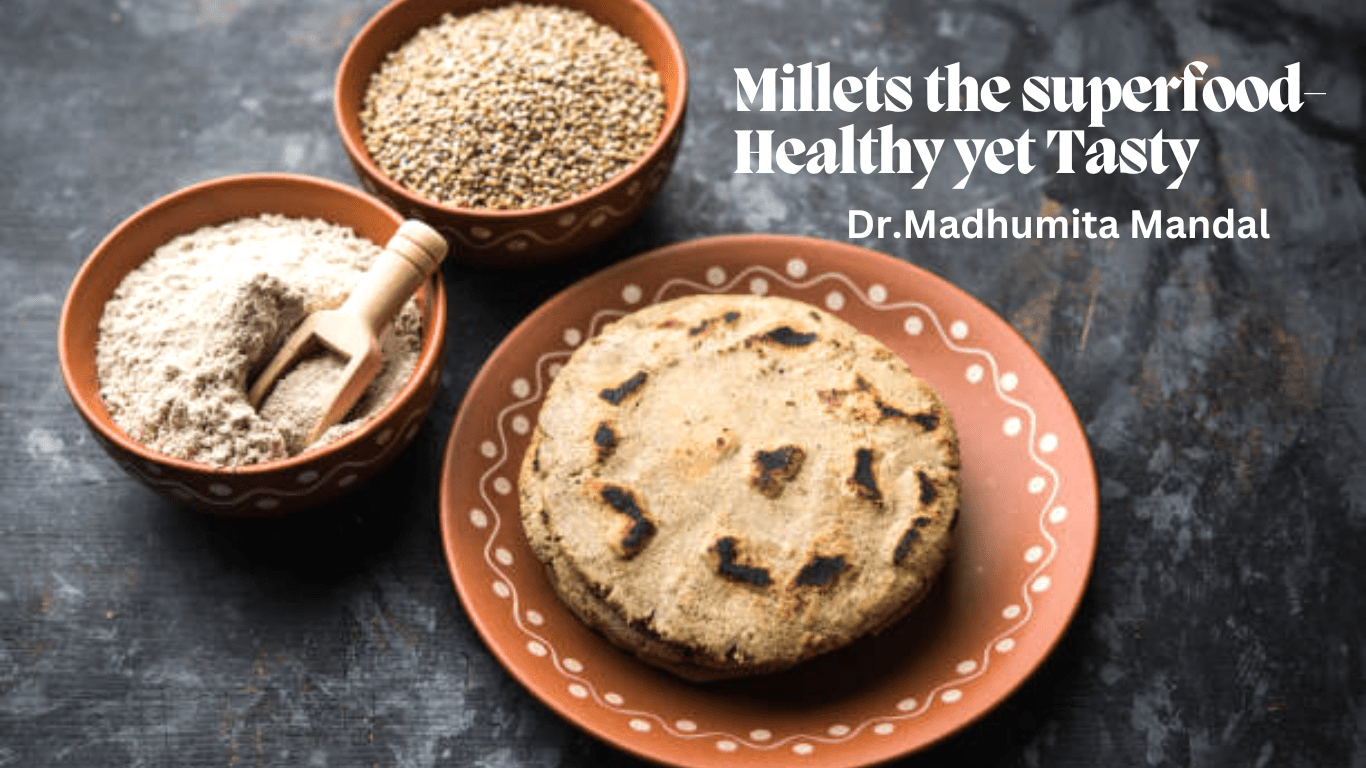If any food provides you immense energy, nutrients and low at accelerating blood sugar levels, how will you react to it? Many Indians have shunned millets for long not understanding its dietary benefits (when India is considered as the diabetes capital of the world with close to 80 million people suffering from the disease). Millets belong to a group of cereal grains from Poaceae family, commonly known as the grass family. The difference between millet and grain is akin to the difference between cat and mammal. In other words, millet is an example of a grain. Other common grains are wheat, oats, barley, rice, and rye. And just like there are different varieties of wheat or rice, there are different varieties of millet.
Millets are traditionally grown in Asia and Africa. One of the ancient cultivated crops with evidence found in Indus civilization 3000 BC. There are more than 5000 varieties of millets throughout the world and many are considered beneficial for health since they are gluten free and good for digestive system.
Well, the biggest benefit of adapting a millet diet is low glycaemic index of soluble dietary fiber enabling better sugar control. When it comes to managing type-2 diabetes millets are considered a superfood with high magnesium content. Magnesium significantly boasts the efficiency of insulin receptors and decreases insulin resistance. Millets have a significant amount of soluble and insoluble fiber which regulates your digestion process and prevents the food from moving too fast or too slow in your digestive tract. The fiber in millet is also helpful in reducing the risk of gallstones.
The classification of the “Nutri Cereals” or Millets goes like this-
- Major Millets-
- Sorghum (Jowar) I Rich in protein, fibre, thiamine, riboflavin, folic acid and carotene
- Pearl Millet (Bajra) I Rich in protein, fibre, foliate, magnesium, iron, Vitamins B& E complex. It is high energy food.
- Finger Millet (Ragi) I Rich in calcium (350 mg/100 gm) It has the highest mineral content and high anti-oxidant activity.
- Minor Millets-
- Foxtail Millet (Kakum) I Rich in carbs, protein, copper and iron.
- Kodo Millets (Kodo) I Rich in protein, low in fat, very high in fibre and rich in vita B
- Barnyard Millet (Sanwa) I Rich in crude iron and fibre
- Little Millet (Kutki/Shavan) I Rich source of iron & antioxidants
- Proso Millet (Chenna Barri) I Rich in protein and calcium and reduces risk of high cholesterol
- Pseudo Millets-
- Amarnath (Rajgira) I Protein rich and carrier of lysine
- Buckwheat (Kuttu) I Protein rich, amino acid, lysine, vitamins B1, C & E
SMART FOOD of the century
When the world is reeling under two types of nutrition problem, namely obesity and malnutrition, the United Nations has declared 2023 to be the “International Year of Millet” at the initiative of the Indian government. Compared to the other grain, millets are easy to grow and not pampering in terms of soil or rain is required. Millets don’t require as much time and efforts as it is required for rice and wheat. Millets have gained popularity in the West because they are gluten-free and boasts high protein, fiber, vitamins and antioxidant contents. It has short growing season and short harvest time. Millets resists water shortage and easily grow in dry regions. They act as dual-purpose crops—food and fodder—they make strong economic sense in mixed farming systems.
Millet cooking ways
All ladies out there can lend their ears, Millets have proven weight loss benefits because it is a powerhouse of several essential nutrients essential for losing weight- proteins, vitamins, and fibres that effectively helps in shedding those extra kilos. Millets are the most versatile grain that can be cooked in various forms like soups, porridges, roti, dosa, idli, khichdi, etc.
Millets should be soaked overnight or for a minimum of 10 hours in slightly warm water. You can also add a teaspoon of freshly squeezed lemon to the warm water. Soaking in warm water and the acidic nature of lemon juice helps in the elimination of anti-nutrients present in millets. Before cooking, rinse the soaked millets Malting/sprouting of certain millets like finger millets enhances the nutritional qualities of the millet.
Like any other good food, self-restraint is a must in the case of millets too. 3-4 times a week is safe to consume millets. Millets like Ragi and Jowar can be consumed daily once in a meal or snacks. On average, an adult should include 30 – 40 grams of grains per day. See that your millet quantity doesn’t exceed this level. Remember to keep yourself well hydrated while consuming millets as the fiber absorbs too much water from the body and can make you dehydrated within.
People with thyroid problem should be careful with millets as they are goitrogens and can interfere with iodine intake in already low iodine cases. Those having Kidney disorders and have oxalate formation issues can avoid pearl millet or bajra. Women having severe iron deficiencies can check with their iron levels regularly if they are on a millet diet (Phytic acid interference). In cases of repeated bloating and indigestion, check for allergic issues.
People who are allergic to one or more grains should avoid multigrain products. Variety is always good and it could be the key to good health. Include a good portion of vegetables and pulses in your diet along with millet to have a wholesome meal.


3 Comments
R C Sharma
Thsnk you Madhumita for this wonderful information.
Yes sometimes people consume millet in all meals throughout week in villages because it is cheap…specially in winters and it creates problem in certain cases… also bajra is difficult to digest as it is very high energy food..i think.
Thank you again..keep writing..keep informing
admin
Thanks
Uwe
excfellent poknts altogether, yoou simppy wonn a nnew reader.
Whaat mmay youu suggwst abouht your publish that you made some days iin the
past? Anny certain?